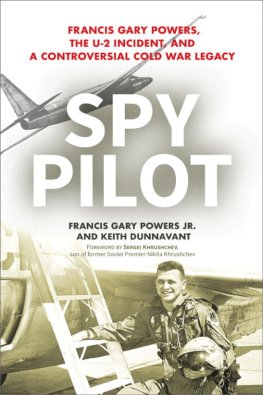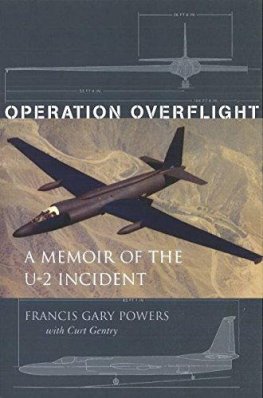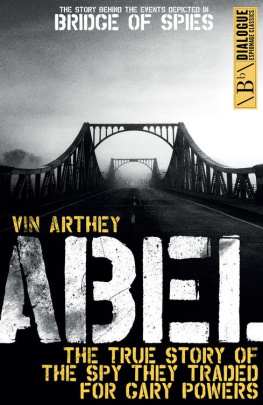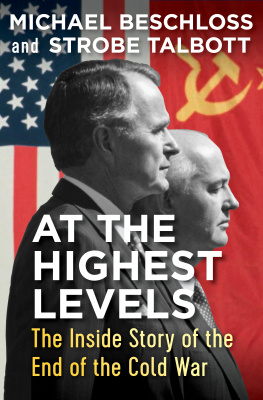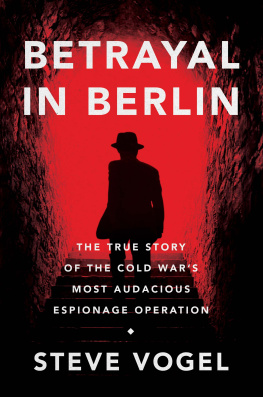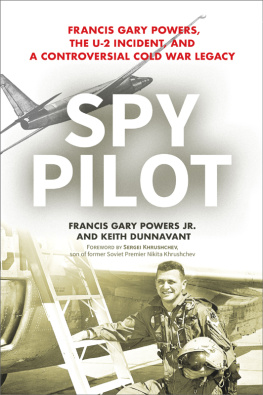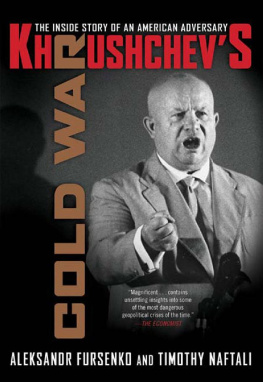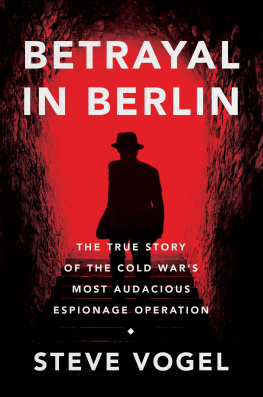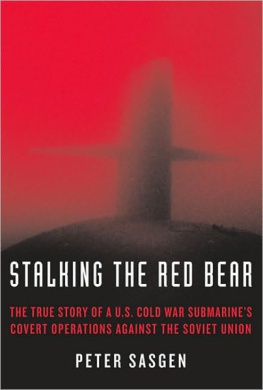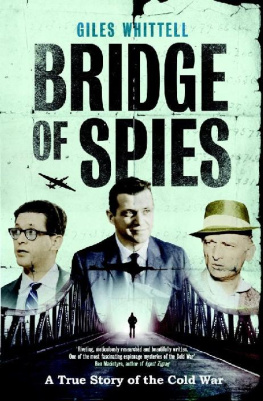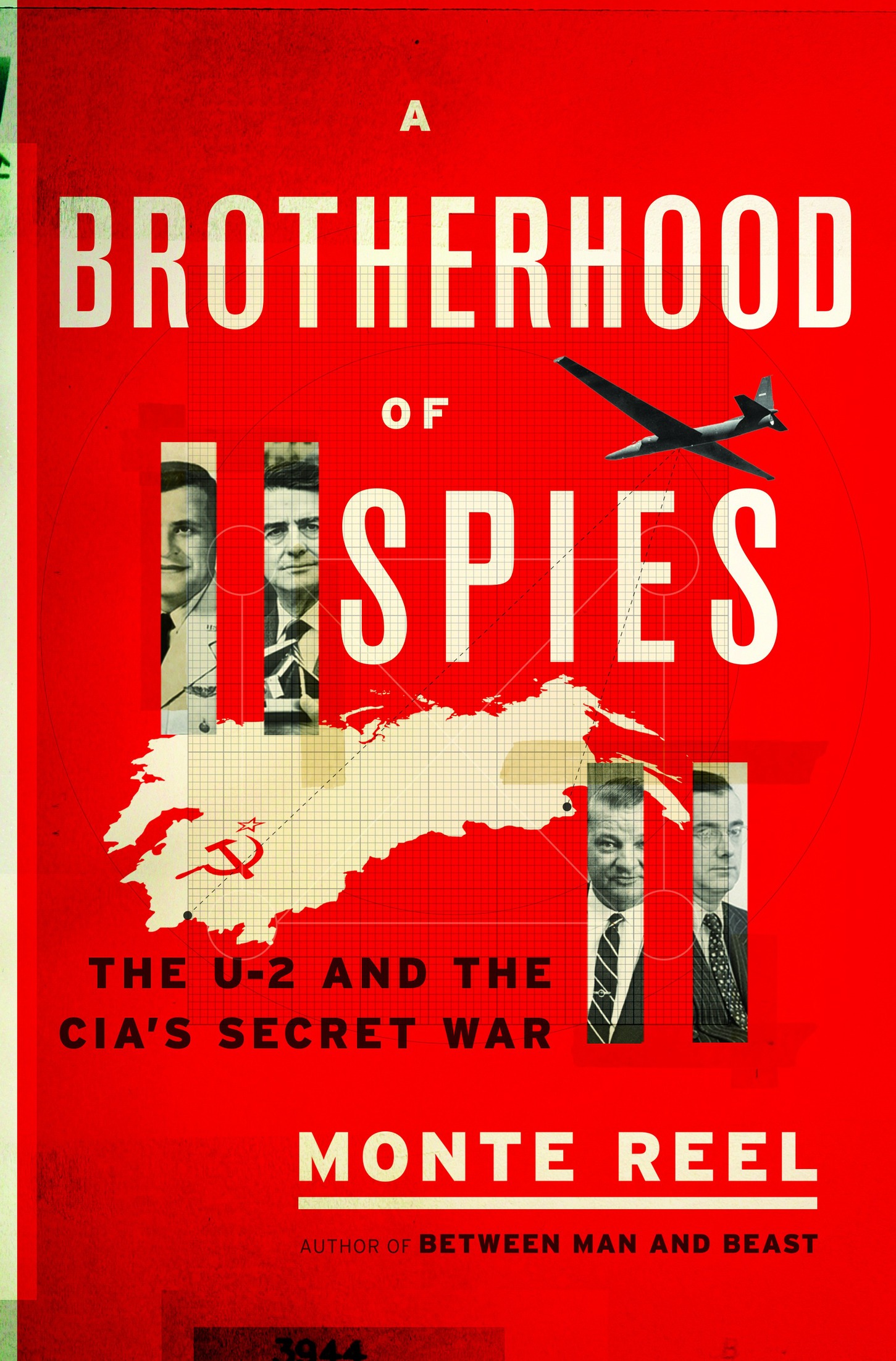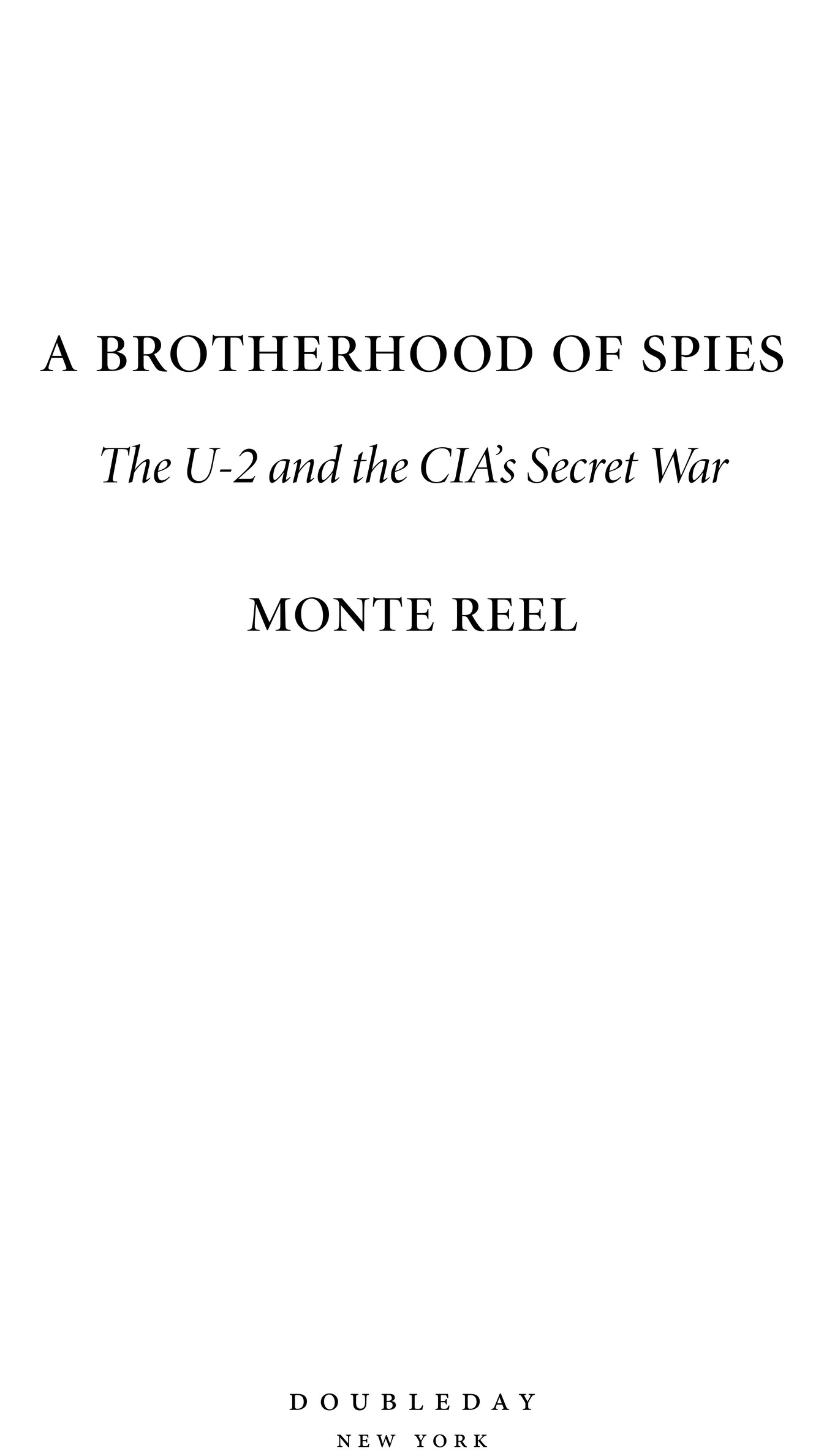A LSO BY M ONTE R EEL
Between Man and Beast
The Last of the Tribe

Copyright 2018 by Monte Reel
All rights reserved. Published in the United States by Doubleday, a division of Penguin Random House LLC, New York, and distributed in Canada by Random House of Canada, a division of Penguin Random House Canada Limited, Toronto.
www.doubleday.com
DOUBLEDAY and the portrayal of an anchor with a dolphin are registered trademarks of Penguin Random House LLC.
Cover design by Michael J. Windsor
Cover images: (left to right, clockwise) Francis Gary Powers / Getty Images; Edwin Land by Alfred Eisenstaedt; Clarence L. Johnson by J. R. Eyerman; and Richard M. Bissell, Jr., by Alfred Eisenstaedt, all from the LIFE Picture Collection / Getty Images; U2 plane / Getty Images, (map and background) Shutterstock
Library of Congress Cataloging-in-Publication Data
Names: Reel, Monte, author.
Title: A brotherhood of spies : the U-2 and the CIAs secret war / Monte Reel.
Description: First edition. | New York : Doubleday, [2018] | Includes bibliographical references and index.
Identifiers: LCCN 2017053819 (print) | LCCN 2017059371 (ebook) | ISBN 9780385540209 (hardcover) | ISBN 9780385540216 (ebook)
Subjects: LCSH: Intelligence serviceUnited StatesHistory20th century. | United States. Central Intelligence AgencyHistory20th century. | U-2 (Reconnaissance aircraft) | U-2 Incident, 1960. | Land, Edwin H., 19091991. | Johnson, Clarence L., 19101990. | Bissell, Richard M. (Richard Mervin), 19091994. | Powers, Francis Gary, 19291977.
Classification: LCC JK468.I6 (ebook) | LCC JK468.I6 R45 2018 (print) | DDC 327.1273047/09046dc23
LC record available at https://lccn.loc.gov/2017053819
Ebook ISBN9780385540216
v5.2
ep
For Sofia and Violet
Contents
Prologue
MAY 3, 1960
NEW YORK CITY
Its a warm spring day, and about five thousand peoplean average crowd for a Tuesday afternoonswarm across the sidewalks and intersections of Times Square. Near Forty-Second Street, they shoulder past hot dog stands, pause in front of a window display of Stetson hats, and ignore the chattering street vendors with their cheap knives, transistor radios, and miracle powders. A mounted policeman nudges his horse onto Broadway, where the traffic pulses in fits and starts. The sun is bright yellow and still high enough to reach down between the skyscrapers. The clock hands on the Bond Clothes sign above Broadway say its not quite 2:15 p.m.
Electric advertisements beg for attention, flashing from nearly every building, and their collective message is consistent: the future is right here, right now. The big TWA sign above the square has a newly installed featureJets, spelled out in bright red neon. The word hasnt been part of the American vocabulary for long, but its already inescapable, sometimes used as a noun, sometimes a verb, sometimes an adjective, and always jazzing up everything it touches with the silvery sheen of modernity. Just over a year ago, a Pan Am 707 made the first coast-to-coast commercial jet flight, and airlines have been tripping over themselves to inaugurate new routes ever since. Jets to Africa! flashes a sign over Broadway. Jet Your Way to Tel Aviv!
Speed is the new seduction, and New Yorkers confront it everywhere they turn. In the Willoughbys camera store, theres a sale on Polaroid Speedliner instant cameras, which can spit out prints in less than a minute. At the new Daitch Shopwell grocery store on First Avenue, executives have unveiled a scale model of the automated supermarket of the future, with aisles that move on electric-powered conveyor belts, shuttling shoppers past the shelves. At the Horn & Hardart Automat, on Broadway near Forty-Seventh Street, hundreds of shrink-wrapped lunches sit behind a wall of coin-operated windows: drop thirty-five cents into a slot, slide open a window, and pull out todays speciala corned beef and pickle sandwich, ready to eat.
Near the subway stations, the latest front pages are papered to the sides of the newsstands, giving pedestrians an eyeful of headlines as they shuffle past: Senator John F. Kennedy is the predicted winner of todays Democratic primaries in Indiana, Ohio, and the District of Columbia. President Eisenhower, with less than a year left in his second term, is scheduled to tour an army base to inspect Americas new Davy Crockett launcher, a contraption that can fire miniaturized nuclear warheads from the back of a jeep. In sports, the Yankees could jump into first place if they beat the Detroit Tigers.
The clock above Times Square flips to 2:15, and in an instant everything stops.
ON THE OBSERVATION DECK of 30 Rockefeller Plaza, seventy stories above the jostle and throb of the streets, a Chrysler V-8 engine mounted on a platform of riveted steel has just revved to life. The engine powers a high-decibel horn, which has begun spinning on its base. It sends an ear-shattering wail over the city, a tone that rises and falls in pitch. Within seconds, 721 smaller-gauge hornsaffixed to streetlamps, to rooftops, to traffic lightsjoin in to create a warbling chorus, flooding the city in rolling waves of stereophonic alarm.
About ten miles north in Claremont Park, a young girl on a wood-plank swing had been leaning back and kicking her saddle shoes toward the clear blue sky, but when the sirens reach her, she jumps off the swing and abandons the playground. At the Bronx Zoo, an animal handler pushes hard on the hindquarters of an elephant, trying to force it into an indoor shelter. Inside Yankee Stadium, left-hander Whitey Ford is walking off the pitchers mound, disappearing into the dugout with the rest of his teammates. The stadiums ushers begin ordering spectators out of the sunny bleacher sections, and most of the 10,255 fans in the park huddle together in the dim concourses.
The sirens drone on. At the First National Bank branch on lower Broadway, a manager raises his voice above the din: Wrap it up! The tellers slam the lids on their cash trays and hurry them into the vault. Inside the Waldorf Astoria hotel on Park Avenue, the oak-paneled bara designated fallout shelter, according to a sign by the doorfills up with about a hundred men, many of whom take the opportunity to order martinis and highballs. Several women also enter and try to get drinks, but they are politely turned away, because ladies are never served at the Waldorf bar. Downtown, on the floor of the New York Stock Exchange, trading stops.
Drivers pull their cars to the curb and abandon them. Hundreds of people stream off paralyzed city buses, and in Times Square a human tide pours down the subway stairwells, out of sight.
A civil defense policeman monitors it all, and when Times Square is empty of people, he checks his stopwatch: the sirens have been wailing for exactly one minute and forty-nine seconds.
THEYD BEEN WARNED THIS WAS COMING. Operation Alert 1960 had been billed as the biggest civil defense drill in Americas history. From New York to Los Angeles, millions of Americans have been instructed to duck for cover as if the countrys greatest fear has come true: a fleet of Soviet long-range bombers has penetrated Americas airspace, and those jets are about to drop nuclear warheads on the countrys biggest cities.


